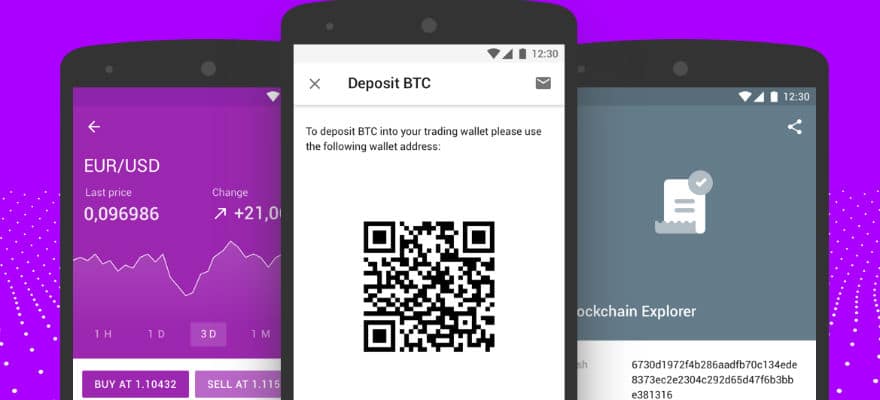On Thursday we reported that Dash marked its second birthday last week with a vote among its stakeholders to increase the blocksize from 1 MB to 2 MB. Despite coming far ahead of demand for the move, the measure passed in less than 24 hours by an overwhelming majority with 99 percent of the vote.
Evan Duffield, creator and chief architect of Dash proclaimed: “With pundits in a panic proclaiming the death of bitcoin and other decentralized Cryptocurrencies not backed by a bank or government from a single blog post by a former bitcoin developer who has joined a bank Blockchain development consortium, we thought it would be instrumental to show how the superior consensus mechanism in the world’s fastest cryptocurrency can be achieved in a single day through Dash’s decentralized governance protocol where one literally votes with one’s coins."
On Friday Duffield gave a rare in-person presentation at the North American Bitcoin Conference updating the bitcoin community on this, as well as to show an early version of Dash Evolution, a mobile-enabled user interface that will make interacting in Dash easier. Before his presentation Duffield shared his thoughts with Finance Magnates about this move and his creation.
Why was the blocksize increased now?
"Learning from the experience of others is critical to success, it is clear that cryptocurrency is reaching a stage in which it needs more room to keep growing. Most people still think in terms of more space within the Bitcoin blockchain, but we believe it is more important for the cryptocurrency industry as a whole to offer more capacity. This growth can come from other blockchains too, like ours, but for this to happen we need to be prepared and listen to the market and what users are demanding.
Another very important reason to go through this now, is because our ecosystem is still relatively small compared to Bitcoin’s, so the process of doing this change should be done with enough time to fully prepare the network as not to affect any of our users or our growth. By allowing ourselves ample amounts of time we also allow the network to adjust to our predicted growth and we allow our developers to implement the solutions required in a careful and thoughtful way.
Finally, we have been thinking about these issues for a long time, the main concern in Bitcoin about raising the block size limit is the resulting centralization it can bring to their network because the additional resources required may prevent the little guy from continuing to run full nodes, leaving only the most profitable companies in the space to run them. We already created a full node incentive program which allows our full nodes to share the block subsidy with the miners so the full node operators can cover the additional resources required to run full nodes as the network scales. This makes the decision of raising the block size easier as we don’t need to worry about losing nodes as a result.
As you can see there are many good reasons to do this now as opposed to wait for it to become a problem. So why wait?"
Why is bitcoin lacking the ability to respond to technical demands as quickly as Dash?
"First you need to recognize that Bitcoin is a pioneer, they created the industry and are the clear leaders. This means that they naturally are going to encounter these issues first. I think the fact that they dedicate 100% of the blockchain subsidy to transactional security through mining makes this decision harder, as other important parts of the network like full nodes are left without resources to scale.
Dash developer Evan Duffield
So I would not say that the Bitcoin community is lacking the ability to respond to technical demands. All of us in the community agree that Bitcoin needs more room to grow, we are Bitcoiners too. The problem is we don’t want for it to result in centralization by squeezing the little guy out.
In Dash we have a responsibility to be innovative and learn from the experience of those that came before us. So we created a model where the blockchain subsidy serves multiple purposes so that when the network grows no one is left behind and we remain decentralized.
Another thing that helps us make fast decisions is our decentralized governance system, it allows us to take the pulse of the community and see if our stakeholders support an idea in a transparent way. All of our full nodes voted on this and there was overwhelming support to raising the block size. We will continue to use this same method whenever we want to make sure our development decisions are aligned with the needs of our stakeholders."
What is your realistic vision for Dash in five years from now?
"The Dash project is only two years old and during that time we have been building a system where users can utilize network-wide double-spend proof instant transactions, improved fungibility and we have been also building technology that allows the network to be self-funding and self-governing. With the appropriate technology in place, we believe we’re in a good position to grow the currency over the next few years.
However, we believe the Bitcoin project and the Dash project are going down two separate paths as far as adoption is concerned. The Bitcoin project is beginning to be treated as a high-value settlement ledger, which is an entire different use case than what the Dash project is intended to achieve. The Dash project is designed to focus on instant-transactions, user privacy and ease of use. This will allow fast purely peer-to-peer low cost commerce that is safe and easy to use. We want to keep the network close to the users and minimize the need for them to go through centralized services on top of Dash.
In five years we see the Dash project growing into that role, as a truly decentralized peer to peer version of paypal built on top of a cryptographic currency. By building out the technology this way we will be facilitating a niche that the Bitcoin project can’t cover as easily without relying on centralized technologies such as the Lightning Network."






















